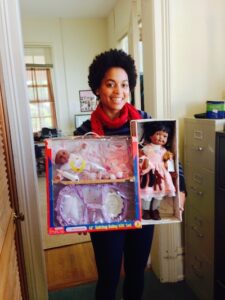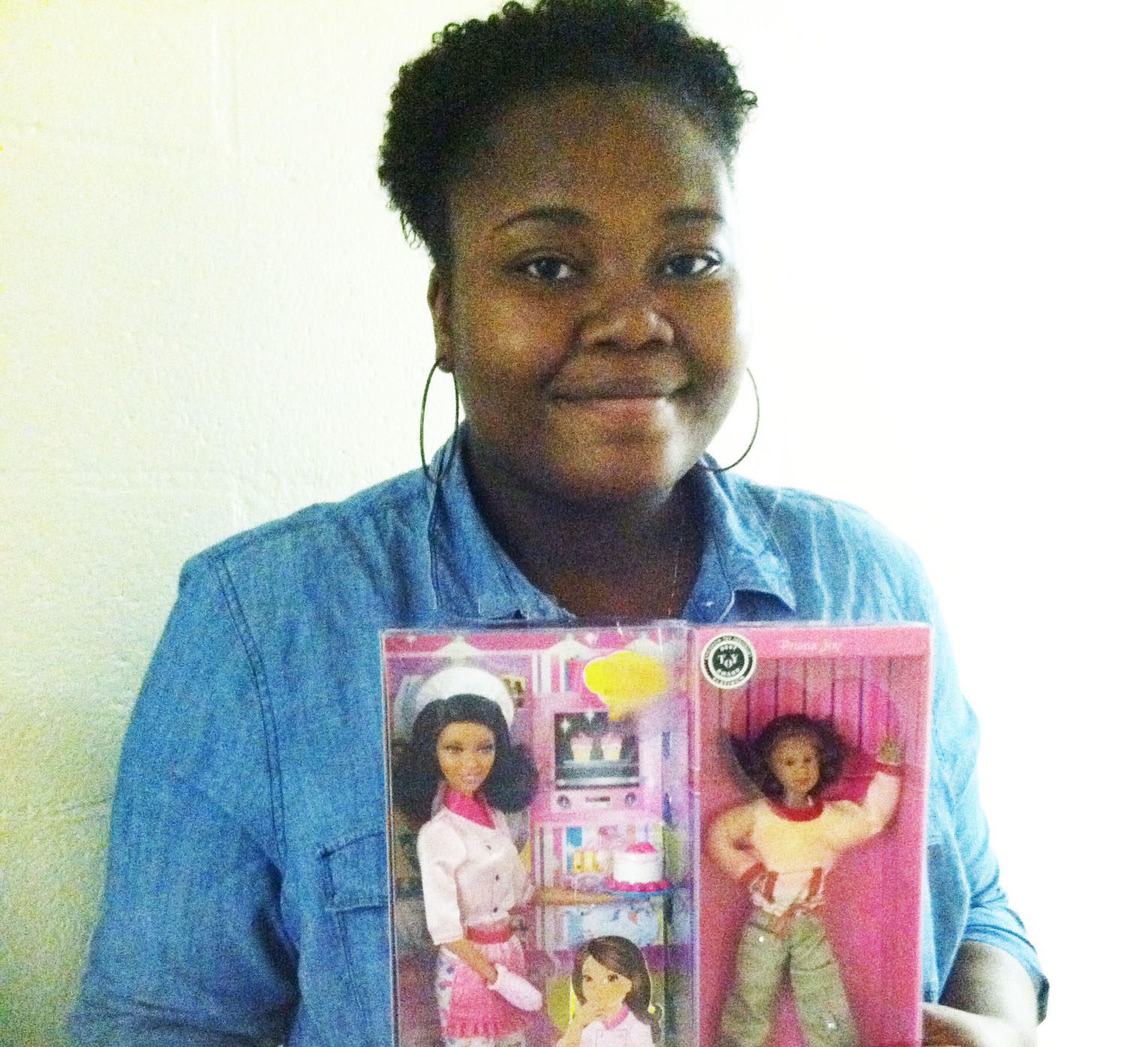Black Baby Doll Drive is in its 17th Year
Mary Baldwin University students in the Ida B. Wells Gateway and PERSIST program are collecting black baby dolls for local children through December 3 in an effort to boost confidence and self esteem.

“The dolls should look like the average African-American child,” said freshman organizer Kaelyn Dickinson. “They should have black or brown hair and black or brown eyes.”
Sounds easy enough? Not really. At least, not for many young black girls who are looking for dolls that look like them. Many dolls today are covered in tattoos, are scantily clad, or have exaggerated features. Research shows that this phenomenon is perpetuating a negative image among black girls.
“In my experience it is difficult for African-American girls to find dolls that fit the criteria,” said Dickinson, who is black. “The Clark Doll Test shows that when some African-American children were asked what doll was the prettiest and smartest they chose the Caucasian doll. Some of the African-American children thought the ugly and stupid doll was the African American one.”
Dickinson continued, it’s difficult for black girls to see that “they are just as beautiful and intelligent as others who look different,” when the vast majority of black baby dolls have unrealistic features.
“It was difficult for my parents and for me to find dolls that looked like me,” said student organizer Kirsten Goodman ’18. “The dolls either had accentuating features or they were some type of fairy or had different color eyes. The difference for me was that even though I played with an array of dolls — black, white, or princess dolls — I was fortunate enough to have supportive parents who constantly uplifted me. However, that isn’t the case in every home. Not only is it difficult to find the dolls we are looking for, they are often more costly.”
“This effort really resonates with me because I have experienced first-hand young African-American girls dealing with issues like self-confidence and low self esteem due to what our society deems ‘intelligent’ or ‘beautiful,’” Goodman said. “I think giving dolls is not only a great way to give back to the community, but also presents an opportunity where we can uplift young African-American girls.”

Organizers are asking members of the community to donate African-American dolls who have “basic” features: no blue or green eyes, no piercings, no highlights in the hair, and no princesses or fairies. The dolls must be fully clothed and must not come with cell phones. The purpose of these very specific regulations, Goodman said, is to show black girls that they are beautiful in their own skin. The students are also collecting monetary donations for purchasing appropriate baby dolls.
Participants in the drive can give dolls or monetary donations to any Ida B. Wells member or drop them off at the Office of Inclusive Excellence. Dolls can also be donated at the Spencer Center for Civic and Global Engagement, where they will eventually be displayed. The goal is to collect or purchase 400 baby dolls, which will be distributed around the Christmas holiday to children from low-income families and to African-American girls who don’t come from lower-income families, but who simply want a doll that looks like them.